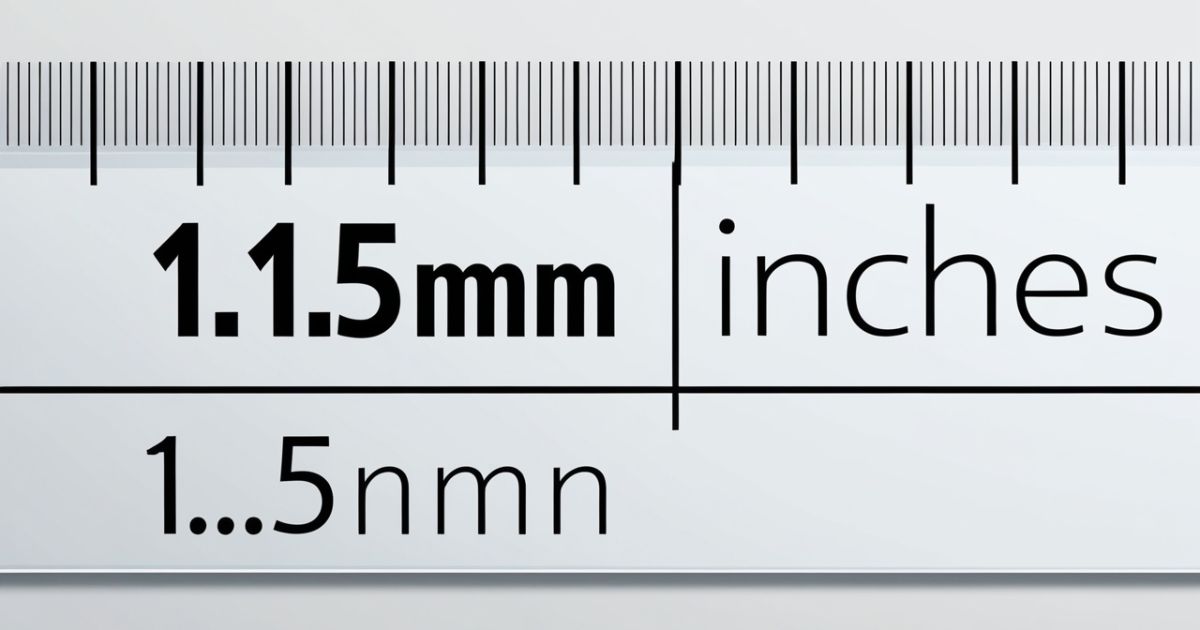Precision in measurement conversion directly impacts project success across industries, from manufacturing to construction. Understanding how to convert 1.5mm to inches becomes essential when working with international specifications, cross-border projects, or mixed measurement systems. This comprehensive guide provides the exact conversion value of 0.0591 inches along with practical applications that professionals encounter daily.
Whether you work in engineering, automotive industry, electronics, or aerospace industry, mastering the metric to imperial conversion ensures accuracy in technical specifications and prevents costly measurement errors. The 1.5 millimeters in inches conversion represents one of the most frequently requested calculations in precision manufacturing environments.
1.5mm to inches calculator
Professional-grade mm to inches calculator tools provide instant results with adjustable decimal precision options. Modern calculators display both 0.0591 inches in decimal format and fractional equivalents for different application requirements. These tools incorporate input validation to prevent common measurement entry mistakes that occur during rapid conversion tasks.
Advanced calculation features include batch processing capabilities for converting multiple millimeters (mm) measurements simultaneously. The calculator maintains precision settings based on industry requirements, whether working with sheet metal specifications requiring three decimal places or electronics components demanding four-decimal accuracy.
Export functionality allows professionals to save conversion results directly into project documentation systems. This feature proves particularly valuable when converting extensive measurement lists for construction projects or manufacturing specifications that require detailed record-keeping.
1.5mm to Inches Calculator
Interactive measurement conversion tool systems offer enhanced functionality beyond basic arithmetic operations. These calculators provide scientific notation display options for engineering applications and standard decimal formatting for general construction use. Built-in verification systems cross-check results against known conversion standards to ensure mathematical accuracy.
The unit conversion mm to in process incorporates multiple format options including fractional inches representation. Professional users benefit from adjustable rounding parameters that align with specific industry tolerance requirements. Quality assurance features prevent calculation errors through automated range checking and reasonable result validation.
Integration capabilities allow direct connection to computer-aided design software and specification management systems. This connectivity streamlines workflow processes for automotive industry professionals who regularly convert between metric gauge and American Wire Gauge (AWG) specifications.
Conversion Factor
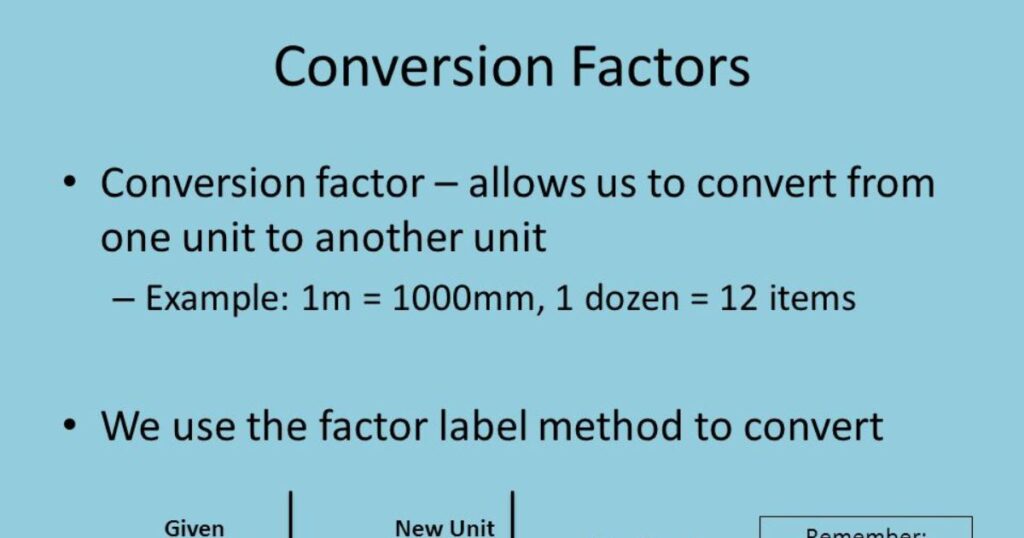
The mathematical foundation underlying millimeter to inch converter calculations relies on the internationally standardized relationship where 25.4 mm equals exactly one inch. This conversion factor emerged through careful calibration efforts by measurement standards organizations worldwide, establishing consistent reference points for global commerce and manufacturing.
Historical development of standardized measurement systems required extensive collaboration between scientific institutions across different countries. The precise definition establishing the meter-inch relationship ensures that 1.5 mm thickness in inches calculations produce identical results regardless of geographic location or measurement equipment manufacturer.
Understanding this fundamental relationship becomes crucial for professionals working on international projects where specification accuracy directly affects component compatibility. The 25.4 divisor provides the mathematical basis for all mm to inches conversions, making it essential knowledge for engineering professionals.
How to calculate
The core formula Inches = Millimeters ÷ 25.4 provides the mathematical foundation for converting 1.5 millimeters in inches. This division-based approach ensures consistent results across different calculation methods and verification systems. Professional applications require understanding both the formula mechanics and appropriate precision levels for different industry contexts.
Mathematical principles governing metric to imperial conversion extend beyond simple arithmetic to encompass measurement uncertainty and tolerance analysis. Engineering professionals must consider propagation of measurement errors when converting between systems, particularly for precision applications in aerospace industry or medical field requirements.
Error prevention strategies include cross-verification using alternative calculation approaches and maintaining consistent decimal precision throughout conversion sequences. Professional standards typically require verification of critical measurements using independent calculation methods to ensure specification accuracy.
Step-by-Step Conversion:
The methodical process for converting 1.5mm to inches begins with identifying the source measurement and required precision level. Professional applications in manufacturing typically demand four-decimal accuracy, while construction projects may accept three-decimal precision depending on tolerance requirements.
Quality control procedures incorporate verification steps at each calculation stage to ensure accuracy maintenance throughout the conversion process. Documentation standards require proper notation of both original and converted measurements, including precision indicators and conversion method identification.
Verification techniques include reverse calculation checking where converted values undergo reconversion to original units. This bidirectional verification process identifies potential calculation errors before they impact project specifications or manufacturing processes.
The complete methodology ensures consistent results suitable for training purposes across different professional environments. Visual learning aids support conceptual understanding for team members with varying mathematical backgrounds, while practice applications provide hands-on experience with real-world conversion scenarios.
Calculation:

Detailed mathematical breakdown for 1.5mm conversion begins with the fundamental division: 1.5 ÷ 25.4 = 0.059055118110…. Professional precision analysis determines appropriate rounding based on application requirements, with 0.0591 inches representing standard four-decimal precision suitable for most engineering applications.
Intermediate calculation steps include validation of input values, application of the conversion factor, and systematic rounding according to industry standards. Electronics manufacturing typically requires precision to four decimal places, while construction applications may round to three decimals depending on material tolerances.
Cross-checking techniques employ alternative calculation approaches including fractional conversion methods and metric conversion validation. These verification procedures ensure mathematical accuracy before incorporating converted measurements into technical specifications or manufacturing documentation.
Understanding acceptable tolerance ranges becomes essential for different professional contexts. Automotive industry specifications may require tighter precision than general construction applications, necessitating appropriate decimal precision selection based on end-use requirements.
Final Answer:
The definitive result establishes that 1.5mm equals 0.0591 inches with precision justification based on standard engineering practices. This measurement represents approximately 3/2 millimeters in fractional terms, providing context for professionals familiar with fractional measurement systems commonly used in construction and manufacturing.
Contextual significance of this measurement relates to common applications including sheet metal thickness specifications, 1.5 mm wire diameter measurements, and precision component dimensions in electronics manufacturing. Understanding what 0.0591 inches represents in practical terms helps professionals visualize the scale and application appropriateness.
Application guidelines specify when different precision levels become necessary, with medical field applications typically requiring higher precision than general construction use. Professional notation standards require consistent formatting throughout technical documentation to prevent misinterpretation by project stakeholders.
Step-by-Step Conversion
Comprehensive methodology suitable for professional training begins with measurement identification and precision requirement determination. The systematic approach ensures consistent results across different team members and project phases, particularly important for manufacturing environments requiring standardized procedures.
Practice applications include sample problems representing real-world scenarios encountered in automotive industry, aerospace industry, and electronics manufacturing. Complete solutions demonstrate proper calculation techniques and verification procedures essential for maintaining quality standards in professional environments.
Mastery validation criteria establish competency benchmarks for measurement conversion skills essential in technical professions. Self-assessment procedures help professionals verify their calculation accuracy and identify areas requiring additional training or practice.
The comprehensive process supports different learning styles through visual aids, mathematical explanations, and hands-on practice opportunities. This approach ensures team members across different educational backgrounds can achieve proficiency in metric to imperial conversion techniques.
Practical Example
Real project scenario demonstrates automotive industry component specification requiring precise 1.5 mm thickness in inches conversion for international supplier coordination. The complete workflow encompasses initial measurement verification, conversion calculation, and final specification documentation suitable for manufacturing implementation.
Problem-solving process includes quality assurance verification procedures used in professional manufacturing environments. These procedures ensure measurement accuracy before committing to production schedules or material procurement decisions that affect project timelines and costs.
Cost impact analysis reveals how measurement accuracy affects project outcomes, particularly in precision manufacturing where small dimensional errors cascade into significant assembly problems. Understanding the economic implications of conversion accuracy motivates careful attention to calculation precision and verification procedures.
The scenario illustrates practical application of conversion skills in real professional contexts, demonstrating how 1.5 millimeters in inches calculations integrate into broader project management and quality assurance processes essential for successful project completion.
Conversion Table
Comprehensive reference table extends from 0.5mm to 5.0mm in 0.1mm increments, providing quick access to frequently requested conversions in professional applications. The table includes decimal representations suitable for engineering documentation and fractional equivalents used in construction specifications.
| Millimeters (mm) | Decimal Inches | Fractional Equivalent |
|---|---|---|
| 1 mm | 0.0394 | ~1/32″ |
| 1.5 mm | 0.0591 | ~3/64″ |
| 2 mm | 0.0787 | ~5/64″ |
| 3 mm | 0.1181 | ~1/8″ |
| 4 mm | 0.1575 | ~5/32″ |
| 5 mm | 0.1969 | ~13/64″ |
Industry-specific tables provide specialized conversions for different professional sectors, with electronics manufacturing requiring different precision levels than construction applications. These specialized references streamline workflow processes by providing pre-calculated values for commonly encountered measurements.
Quick reference guides highlight most frequently requested conversions including 10mm, 15mm, 20mm, 25mm, 30mm, 35mm, 40mm, 45mm, and 50mm measurements. These values support rapid conversion tasks during design reviews and specification verification processes.
Common Conversions
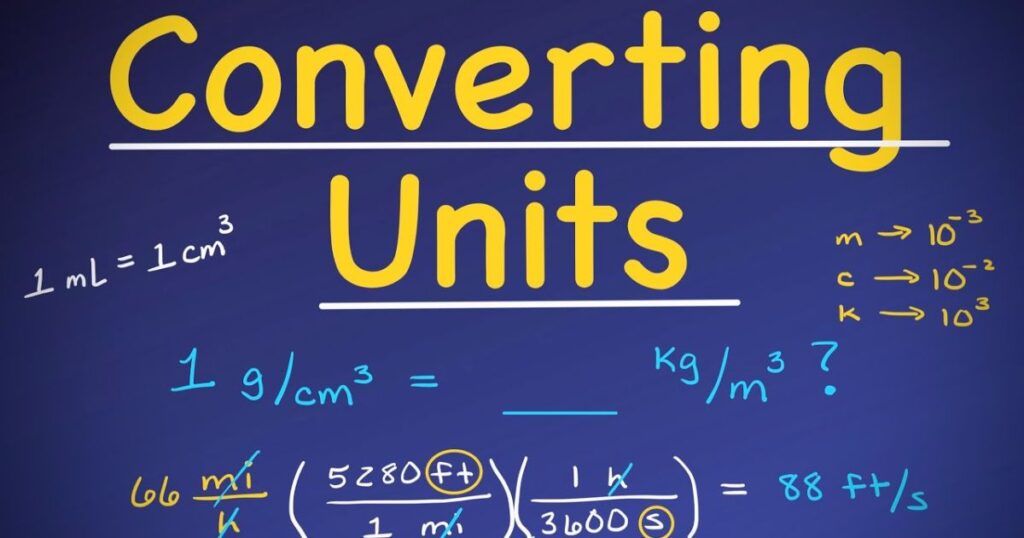
Professional standards identify most frequently used measurements in technical applications across different industries. Manufacturing professionals regularly encounter 1mm, 2mm, 3mm, 4mm, and 5mm specifications that require consistent conversion accuracy for international project coordination.
Industry benchmarks establish standard thicknesses across different manufacturing sectors, with sheet metal applications commonly using 1.5mm thickness for structural components requiring strength-to-weight optimization. Electronics manufacturing frequently specifies similar dimensions for device housings and internal structural elements.
Comparative analysis demonstrates how 1.5mm relates to other common measurements including 1500 microns in precision applications and 15 AWG wire equivalency for electrical specifications. These relationships help professionals understand scale relationships across different measurement contexts.
Memory aids for remembering key conversion values include the fundamental 25.4 conversion factor and common fractional equivalents. Professional development programs often emphasize these reference points to improve calculation speed and accuracy in field applications.
What is 1.5 mm Thickness?
Physical visualization of 1.5 mm thickness compares closely to common objects including credit card thickness or typical fingernail dimensions. This tangible comparison helps professionals understand the scale when specifying materials for construction, manufacturing, or electronics applications requiring precise dimensional control.
Material properties associated with 1.5mm thickness provide sufficient structural integrity for many applications while maintaining workability for installation and modification processes. Sheet metal at this thickness offers excellent formability characteristics essential for automotive industry body panel applications and architectural detailing requirements.
Manufacturing considerations include production tolerances typically maintained within ±0.05mm for precision applications, ensuring consistent quality across production runs. Quality control standards verify thickness measurements using calibrated instruments capable of measuring to microns precision when required by specification.
Specification requirements vary across industries, with aerospace industry applications demanding tighter tolerances than general construction use. Understanding these requirements ensures appropriate material selection and quality control procedures for specific application contexts.
Real-World Examples
Manufacturing applications demonstrate 1.5mm thickness in automotive industry body panels where weight reduction requirements balance against structural integrity needs. These components undergo extensive testing to verify performance characteristics including impact resistance, formability, and corrosion protection suitable for vehicle service life requirements.
Construction materials incorporating 1.5mm thickness include architectural detailing elements and structural reinforcement components. These applications require compliance with building codes and engineering standards that specify minimum thickness requirements for different load-bearing and environmental exposure conditions.
Electronics components utilize 1.5mm specifications for smartphones, tablets, and laptops where slim profile requirements drive dimensional optimization. Manufacturing processes for these components demand precision control to maintain consistent thickness across production volumes while meeting durability requirements.
Quality standards governing 1.5mm thickness applications include dimensional verification procedures, material property testing, and performance validation under service conditions. These comprehensive requirements ensure component reliability across different environmental and operational stress conditions.
What is 1.5 mm Used For?
Cross-industry analysis reveals widespread 1.5mm applications spanning manufacturing, construction, electronics, and medical field sectors. Each industry leverages specific performance characteristics of this thickness dimension to optimize component design for particular functional requirements and operational environments.
Performance characteristics include optimal strength-to-weight ratios for aerospace industry applications, excellent formability for automotive industry manufacturing processes, and precise dimensional stability for electronics component integration requirements. These properties make 1.5mm specifications attractive across diverse technical applications.
Economic considerations favor 1.5mm materials for applications requiring balance between performance and cost-effectiveness. Material utilization efficiency and manufacturing process optimization contribute to favorable economics for volume production applications across different industry sectors.
Future trends indicate expanding applications in emerging technologies including renewable energy systems, advanced materials development, and precision manufacturing processes. These developments create new opportunities for 1.5mm specifications in innovative technical applications.
Industrial Applications
Manufacturing processes utilizing 1.5mm specifications include sheet metal fabrication operations requiring precise forming characteristics and dimensional stability. Precision machining operations achieve tight tolerances essential for component integration in complex assemblies across automotive industry and aerospace industry applications.
Quality control procedures incorporate statistical process control methods to maintain consistent thickness measurements throughout production runs. These procedures include automated measurement systems capable of detecting dimensional variations exceeding specification limits before they affect component performance or assembly operations.
Aerospace industry applications demand compliance with rigorous material specifications and manufacturing standards governing 1.5mm components. Testing procedures verify material properties, dimensional accuracy, and performance characteristics under simulated service conditions including temperature extremes and mechanical stress loading.
Weight-critical component applications leverage 1.5mm thickness specifications to optimize structural efficiency while maintaining required strength characteristics. Advanced materials including titanium alloys and composite structures utilize these dimensions for maximum performance-to-weight ratios essential in aerospace industry applications.
Consumer Products
Electronics manufacturing incorporates 1.5mm specifications extensively in smartphones, tablets, and laptops where consumer expectations for slim profiles drive aggressive dimensional optimization. Manufacturing processes achieve consistent thickness control while maintaining durability requirements for typical consumer use patterns and environmental exposures.
Home improvement applications include hardware specifications where 1.5mm dimensions provide appropriate strength characteristics for residential and commercial installation requirements. These applications require compliance with building codes and safety standards governing structural adequacy and environmental durability.
Recreational equipment manufacturing utilizes 1.5mm specifications for sporting goods applications requiring specific performance characteristics including flexibility, impact resistance, and environmental durability. Quality control procedures ensure consistent performance across production volumes while meeting safety standards for consumer use.
Retail standards governing consumer product specifications include dimensional accuracy requirements, material property verification, and performance testing under simulated use conditions. These comprehensive requirements ensure product reliability and consumer satisfaction across different use scenarios and environmental conditions.
Medical and Scientific Uses
Medical field applications require 1.5mm specifications for surgical instruments where dimensional precision directly affects operational performance and patient safety outcomes. Manufacturing processes achieve medical-grade quality standards including biocompatibility testing and sterilization compatibility verification essential for clinical use applications.
Laboratory equipment specifications incorporate 1.5mm dimensions for precision measurement instruments and analytical equipment where dimensional accuracy affects measurement validity and experimental reproducibility. Quality control procedures ensure consistent performance across different environmental conditions and operational requirements.
Regulatory compliance requirements include FDA approval processes for medical devices incorporating 1.5mm specifications. These comprehensive approval procedures verify safety, efficacy, and quality standards essential for clinical application approval and commercial distribution authorization.
Research applications demonstrate how measurement precision affects experimental validity in scientific investigations requiring controlled dimensional parameters. Understanding these requirements ensures appropriate specification selection and quality control procedures for research equipment and experimental apparatus.
What Size is 1.5 mm Wire?
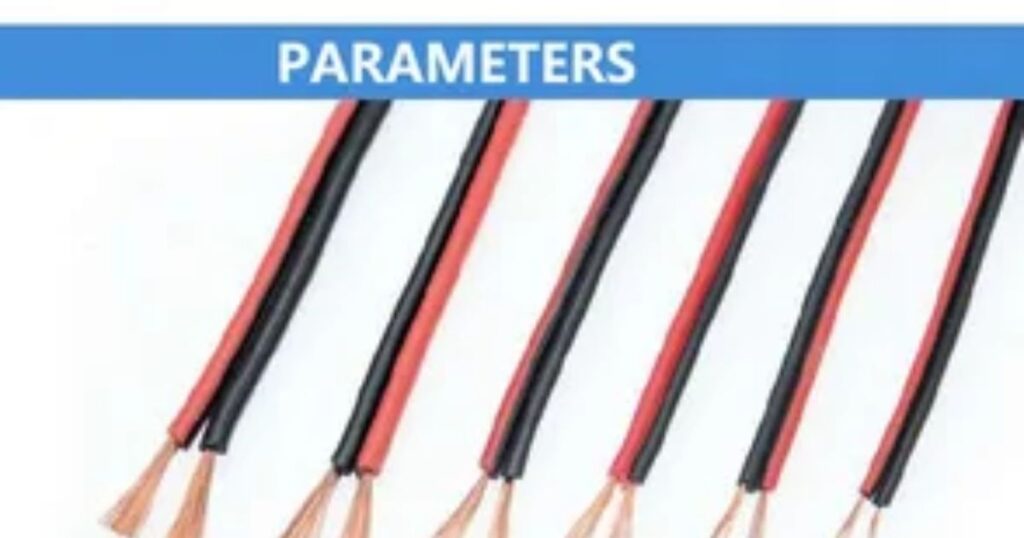
1.5 mm wire diameter represents common specifications in electrical applications where current-carrying capacity balances against physical installation requirements. This wire size provides 16 to 20 amperes capacity depending on conductor material, insulation type, and environmental installation conditions affecting thermal dissipation characteristics.
Installation requirements include compliance with electrical codes governing wire sizing for different circuit applications and environmental conditions. Building codes specify minimum wire sizes for various electrical loads while considering voltage drop limitations and safety factor requirements essential for reliable electrical system operation.
Material variations between 1.5mm copper wire and aluminum conductors affect electrical performance characteristics including resistance values, ampacity ratings, and thermal expansion properties. Professional selection criteria consider these material differences when specifying appropriate conductors for specific electrical applications and environmental conditions.
Professional applications span residential, commercial, and industrial electrical installations where 1.5 mm wire provides appropriate current-carrying capacity for lighting circuits, control systems, and power distribution applications. Quality standards ensure consistent electrical performance and safety characteristics across different installation environments.
Understanding Wire Gauge
American Wire Gauge (AWG) system provides standardized wire sizing classifications used primarily in North American electrical applications. Metric gauge systems offer alternative sizing approaches used internationally, requiring conversion capabilities for global electrical project coordination and component specification compatibility.
Conversion accuracy between different gauge systems ensures proper wire selection for international electrical projects and cross-border equipment compatibility. Understanding these relationships prevents specification errors that could affect electrical performance or safety compliance in different regulatory environments.
Application guidelines specify appropriate wire sizes for specific electrical loads considering voltage drop limitations, thermal dissipation requirements, and safety factor provisions. Professional selection processes incorporate these multiple factors to ensure reliable electrical system performance under expected operational conditions.
Safety considerations include electrical code compliance, proper installation techniques, and environmental protection requirements governing wire applications in different installation environments. These comprehensive requirements ensure electrical system safety and reliability throughout expected service life periods.
Characteristics and Uses
Electrical properties of 1.5mm conductors include resistance calculations, ampacity determinations, and voltage drop analysis essential for proper circuit design and performance verification. 1.5mm copper wire exhibits specific electrical characteristics including conductivity values and thermal properties affecting current-carrying capacity under different operating conditions.
Mechanical properties encompass flexibility characteristics, tensile strength specifications, and installation parameters affecting wire routing and termination procedures. These properties determine suitability for different installation environments including conduit systems, cable tray applications, and direct burial installations requiring specific mechanical performance characteristics.
Environmental factors affecting 1.5 mm wire performance include temperature ratings, moisture resistance specifications, and chemical compatibility requirements. Installation environments dictate appropriate wire selection criteria including insulation types, jacket materials, and protective systems essential for reliable long-term performance.
Cost analysis considerations include material costs, installation labor requirements, and long-term maintenance implications affecting total project economics. Professional selection processes balance initial costs against performance requirements and expected service life characteristics for optimal economic outcomes.
Conversion to AWG
Precise AWG equivalent for 1.5mm wire diameter corresponds approximately to 15 AWG specifications, though exact equivalencies vary slightly depending on measurement standards and conductor construction details. The 1.45mm diameter of standard 15 AWG wire provides close correlation suitable for most practical applications requiring gauge conversion.
Practical implications of gauge differences affect electrical performance characteristics including resistance values, current-carrying capacity, and voltage drop calculations. Understanding these performance variations ensures appropriate wire selection for specific electrical applications and regulatory compliance requirements.
International standards harmonization efforts work toward consistent wire specifications across different measurement systems and regulatory environments. These standardization initiatives facilitate global commerce and technical cooperation while maintaining safety and performance standards essential for reliable electrical system operation.
Professional recommendations emphasize verification of specific wire characteristics rather than relying solely on gauge conversions when critical electrical performance requirements must be satisfied. Direct specification of conductor properties ensures appropriate performance regardless of measurement system variations or regional standards differences.
What is the Capacity of 1.5 mm?
Multiple capacity definitions apply to 1.5mm specifications depending on application context, including volume capacity for containers and current-carrying capacity for electrical conductors. Engineering calculations provide mathematical approaches for determining appropriate capacity values based on specific application requirements and performance criteria.
Container applications utilizing 1.5mm wall thickness affect internal volume calculations for precision dispensing equipment and laboratory equipment requiring accurate volume measurements. Manufacturing tolerances influence actual volume capacity and must be considered when specifying containers for critical measurement applications.
Safety margins incorporated into capacity determinations provide appropriate derating factors ensuring reliable performance under expected operational conditions. Industry standards specify these safety factors based on application requirements, environmental conditions, and regulatory compliance needs affecting system design and specification.
Performance optimization techniques maximize capacity utilization while maintaining safety constraints and regulatory compliance requirements. Professional design processes balance capacity requirements against cost considerations and practical installation constraints affecting overall system effectiveness and economic viability.
Volume and Current Capacity
1.5mm thickness specifications affect container volume calculations where wall thickness reduces internal capacity compared to external dimensions. Precision applications require accurate volume determination considering manufacturing tolerances and material properties affecting dimensional stability under operational conditions.
Current-carrying capacity calculations for 1.5mm electrical conductors incorporate multiple factors including conductor material, insulation type, ambient temperature, and installation conditions affecting thermal dissipation characteristics. Professional ampacity calculations ensure safe operation under expected electrical loading conditions.
Standards compliance requirements govern both volume and current capacity specifications across different industries and applications. These standards ensure consistent performance, safety characteristics, and regulatory compliance essential for commercial applications and professional acceptance.
Performance validation procedures verify actual capacity performance against calculated or specified values through testing under controlled conditions. These verification processes ensure specification accuracy and identify potential performance limitations before system implementation or commercial deployment.
Volume Capacity
Container applications incorporating 1.5mm wall thickness require precise volume calculations considering internal dimensions and manufacturing tolerances affecting actual capacity. Vials and bottles utilizing this wall thickness provide specific volume capacities suitable for precision dispensing and measurement applications in laboratory equipment and medical field use.
Material considerations affecting volume capacity include thermal expansion characteristics, chemical compatibility requirements, and pressure rating specifications governing container design and application suitability. These factors influence container selection for specific application requirements and operational environments.
Manufacturing tolerances establish acceptable variations in volume specifications while maintaining functional performance requirements. Quality assurance procedures verify volume accuracy through calibrated measurement techniques ensuring specification compliance across production volumes.
Professional applications require volume capacity verification through standardized testing procedures ensuring accuracy and repeatability essential for measurement applications. These verification processes establish traceability to measurement standards supporting quality assurance and regulatory compliance requirements.
Current-Carrying Capacity
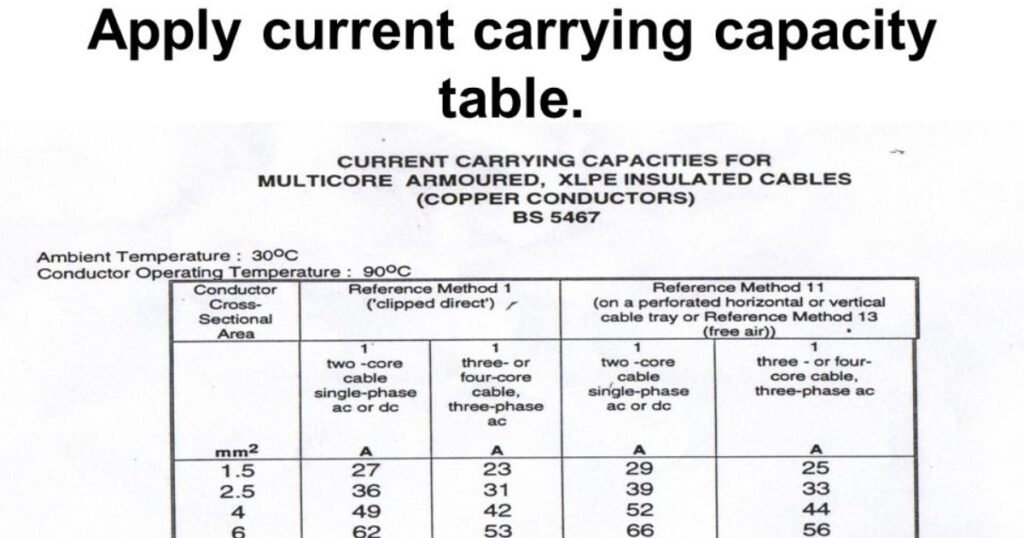
Ampacity calculations for 1.5mm copper wire determine safe current-carrying capacity under specific installation conditions and environmental factors. Standard calculations indicate 16 to 20 amperes capacity depending on insulation type, ambient temperature, and installation method affecting thermal dissipation characteristics.
Environmental derating factors account for temperature effects, installation density, and ventilation conditions affecting conductor thermal performance. Professional ampacity calculations incorporate these multiple factors ensuring safe operation under worst-case environmental conditions and electrical loading scenarios.
Electrical codes governing conductor capacity requirements establish minimum wire sizes for different circuit applications while considering safety factors essential for reliable electrical system operation. Compliance with these codes ensures electrical safety and system reliability throughout expected service life periods.
Professional applications require ampacity verification through standardized calculation procedures and testing protocols ensuring specification accuracy and regulatory compliance. These procedures support electrical system design and installation practices essential for safe and reliable electrical service.
